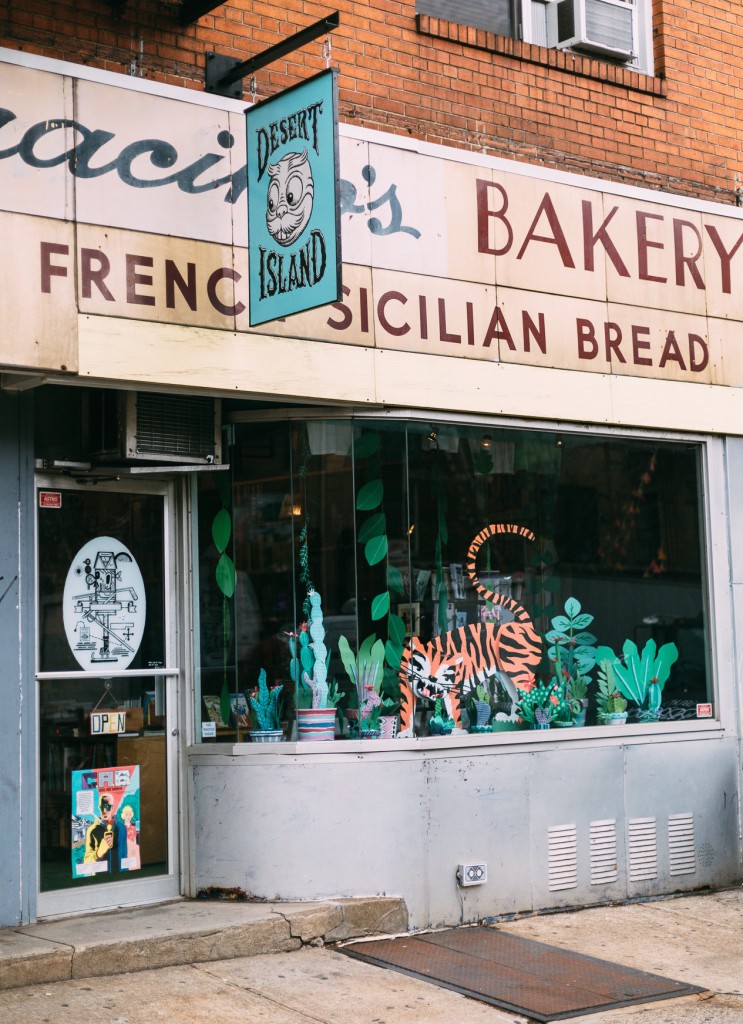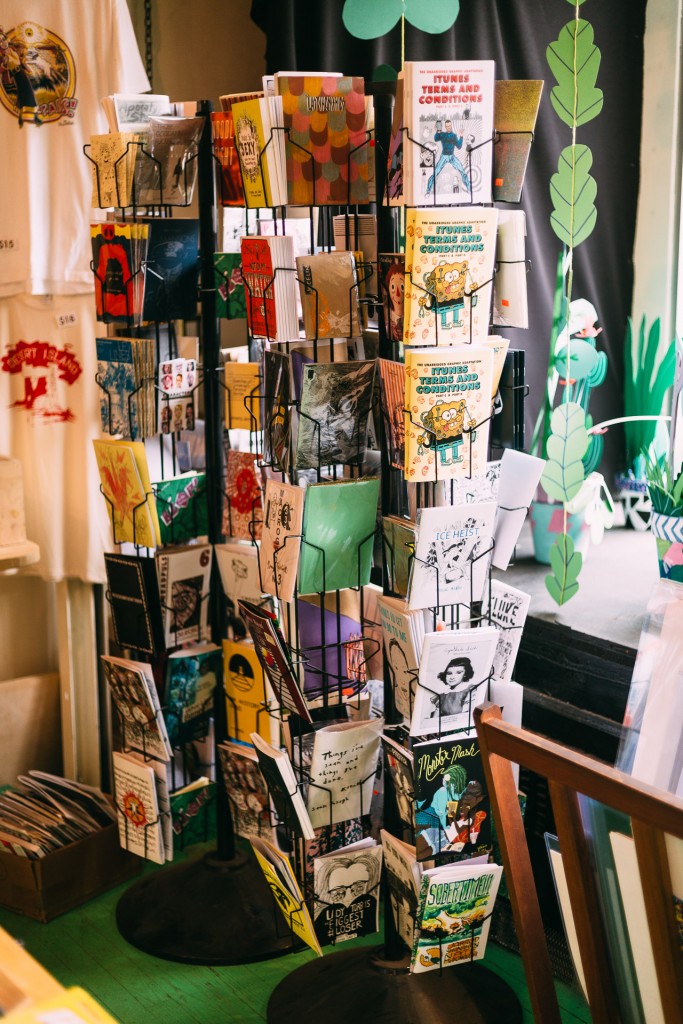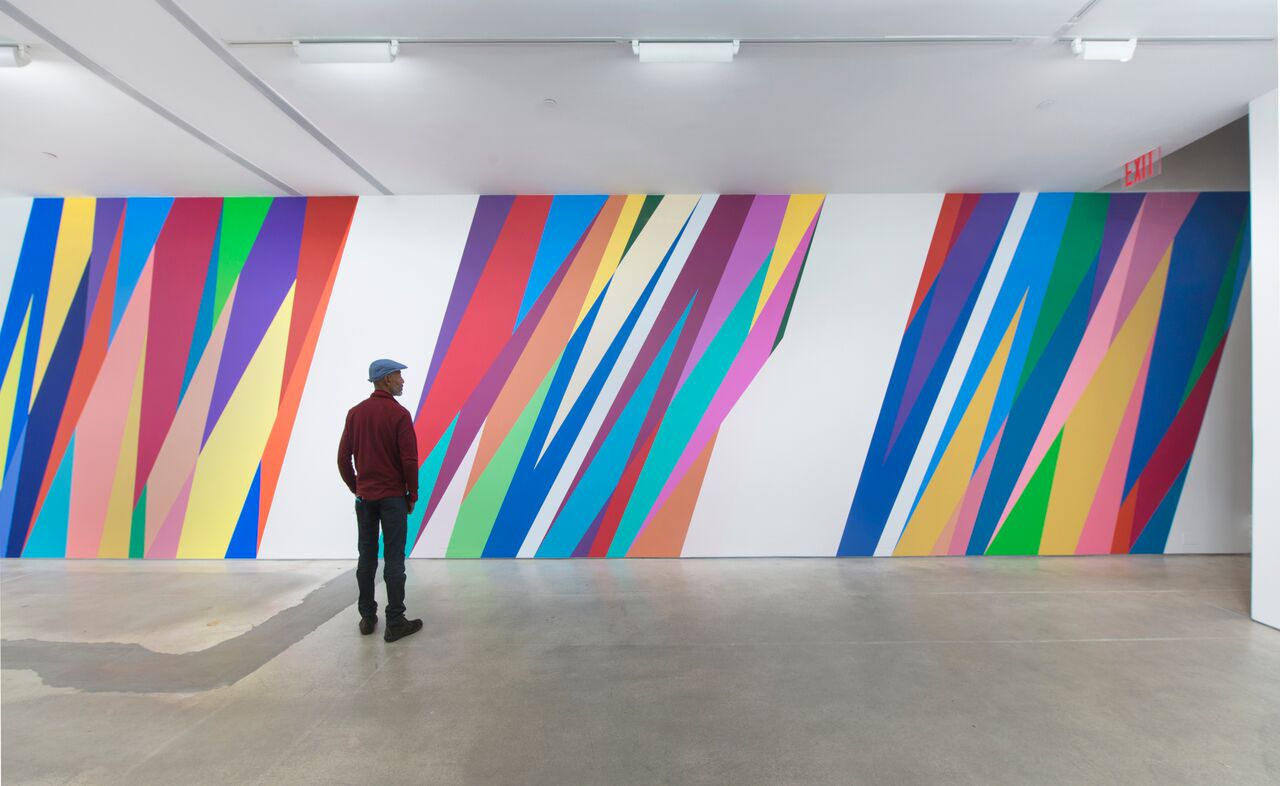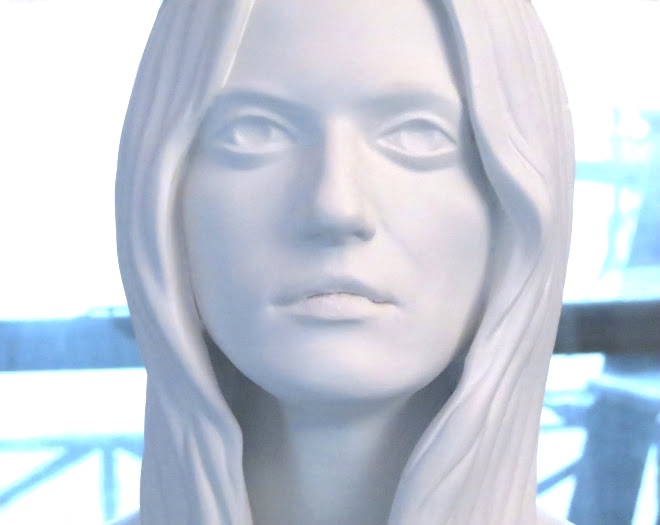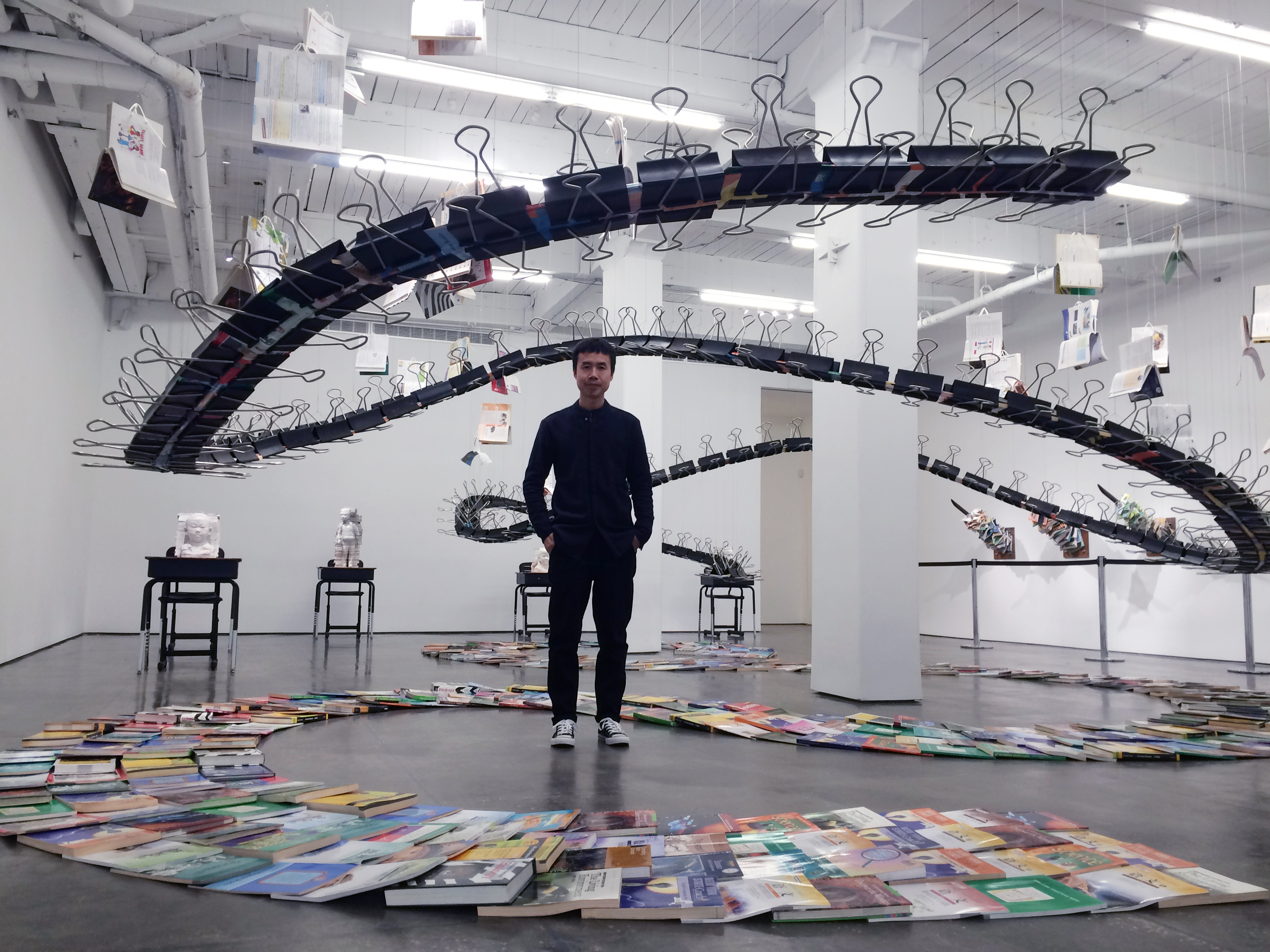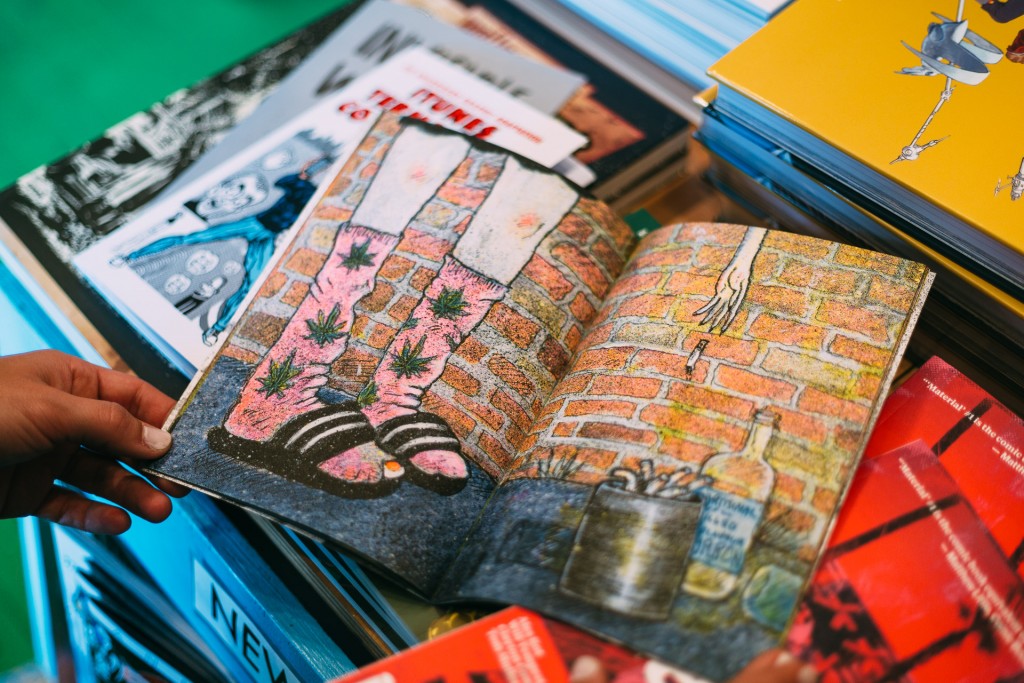
Last month, the Art Book Fair attracted thousands of visitors to MoMA PS1 for a weekend of art books, panel discussions, and lively performances. Vendors were offering the artwork of hundreds of artists but to those outside of the comic/zine culture, the merchandise available was a bit overwhelming.
The intended use for hardcover books, t-shirts, and stickers is fairly obvious, but what about the thin, handmade, and photo-copied zines? Pronounced zeens (derived from magazine), these independently or self published pamphlets date back to Benjamin Franklin, though they really found their footing with 1920s science fiction fans. The rise of punk rock culture in the 1970s saw a total revival of the art form and it has continued to be one of the preferred media for modern artistic countercultures.
They’re not quite comics, they’re not quite coffee-table books – but the artwork, subject matter, and overall appeal is undeniable. So, who makes them, why do they make them, and who buys them?
It seemed logical to pose these questions to the owner of the renowned Brooklyn shop, Desert Island, a store dedicated to showcasing the visual creations of indie artists from all over the world. Gabe Fowler opened the store years ago in hopes of creating a record shop vibe for the community’s visual artists.
Q: How did you get into the world of zines and comics?
A: Comics were generally available lots of places when I was a kid, but I didn’t discover zines until I got into independent music in the late 80s. They had them at the record store.
Q: How do the worlds of comic and zines differ?
A: Comics come from popular culture and are much more widely known than zines. An average person has at least heard of comics, but many have not heard of zines. Zines have always been tied to the counterculture, starting possibly with the Russian avant-garde, through the beatnik underground, into the hippie underground, on to punk and beyond. Comics have an interesting dividing point, where some comics stayed in popular culture and others went underground. I’m primarily interested in underground or independent comics and zines.
Q: What is the average price of a zine?
A: Probably around $5, but people can charge whatever they want, especially for fancy production or work by well-known artists.
Q: Who is the typical consumer?
A: Whenever you generalize you’re always wrong, so I have no idea! I moved to New York so I could be around people who find merit in creative expression, but those people exist around the world. Some people are broad-minded and are interested in zines as a format, others are after a particular type of content regardless of format, and still others are somewhere in the middle.
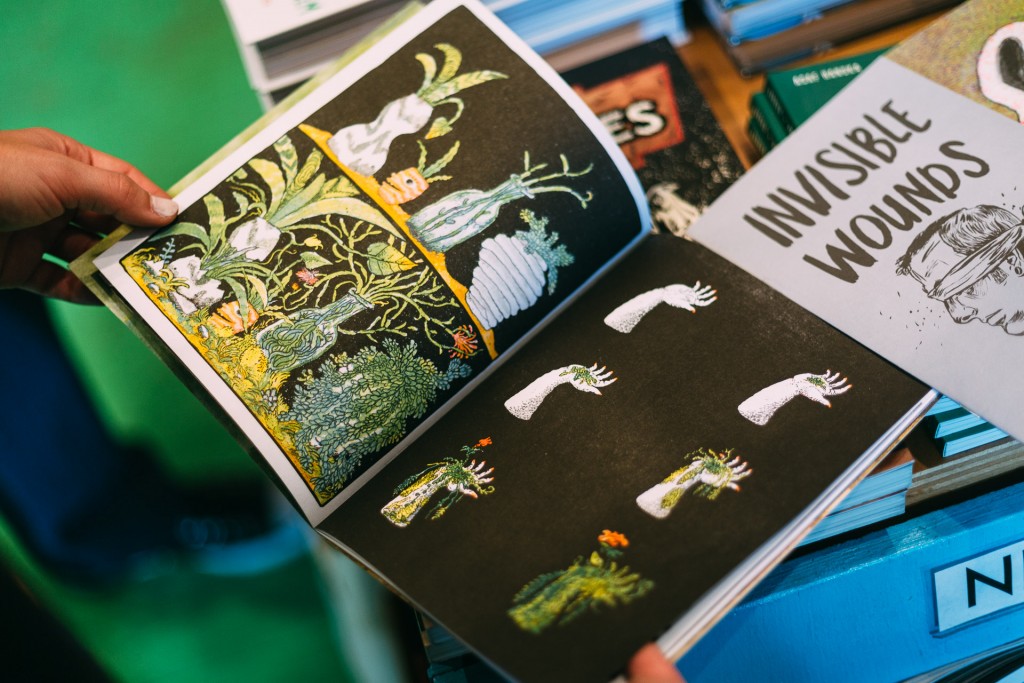
Q: Other than your store, how do consumers discover the artists they are enthusiastic about?
A: Books fairs, the Internet, word of mouth, stuff like that.
Q: Do most people purchase them to collect like comics, do they buy them for gifts, or what?
A: People buy things for different reasons. If you’re going to buy a car, maybe you want good gas milage. Or maybe you want one that goes really fast. Or maybe you want one that makes you feel sexy. I personally collect zines because they speak to me as affordable, portable artworks.
Q: Do most artists make zines as a means to distribute their work and make some money, or are there artists who seek only to create zines?
A: Sure, there are artists who only work in the zine format. Aaron Cometbus immediately comes to mind as an artist who works almost exclusively in zine format. I think for most artists, zines are part of a larger practice, and are simply the best way to make an idea-package.
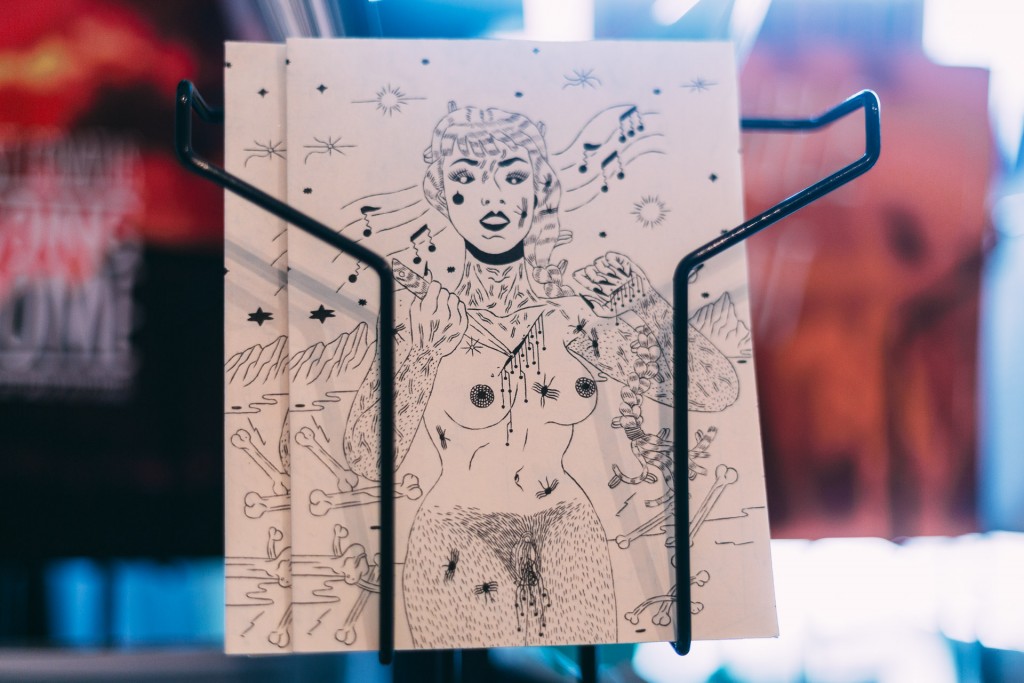
Q: Who are some of the pioneers or icons of the zine world?
A: Ed Sanders and Tuli Kupferberg from The Fugs were pretty damn important. Sanders had a mimeograph machine in the back room of his Peace Eye Bookstore and was helping Tuli produce his “Birth” zine as early as 1958. That material is solid gold, and along with Paul Krassner’s “Realist” newspaper really helped inspire an explosion of counterculture print from the 60s until now. From Fluxus to Riot Grrrl to COUM Transmissions to Hip Hop, there exists a mountain of crucial texts. My favorites growing up were Forced Exposure magazine and Research Press.
Q: Who are some emerging artists that are doing amazing things?
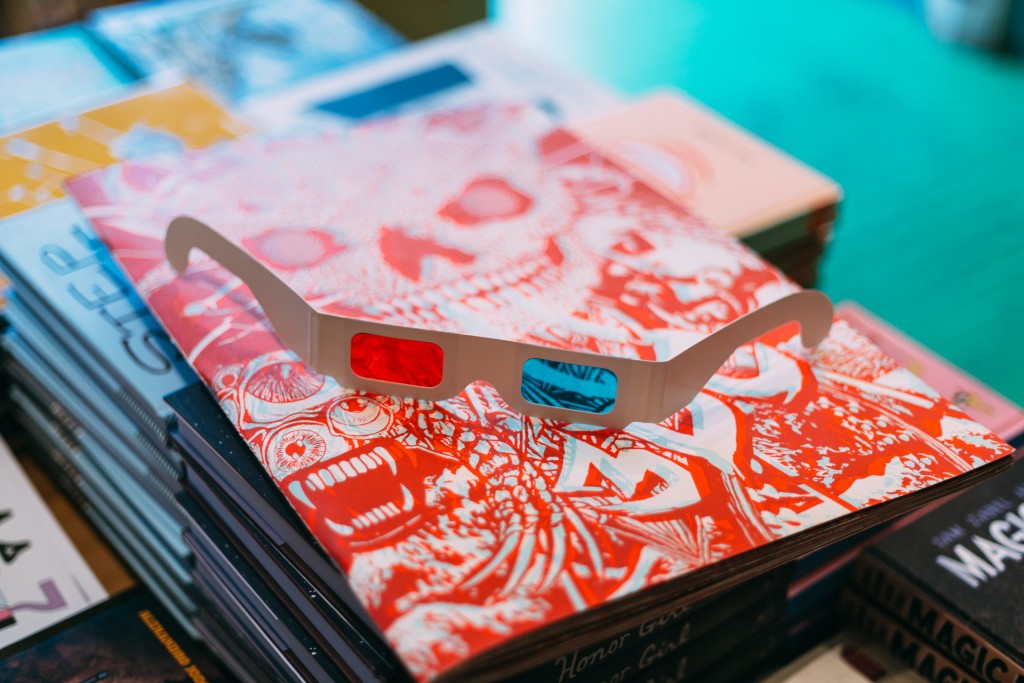
Q: Is the zine industry growing, or am I imagining it because I started paying attention?
A: I think it’s growing by fits and starts. People see a fun scene they can participate in, so they make a book and it’s a bunch of work and you never hear from them again. But some appreciate the craft and unique attributes of print, and commit themselves to work harder and get involved. Now I see more and more of those people, it’s awesome.
Q: How has the Internet influenced the zine community?
A: We’re all trying to react to the slap in the face provided by the Internet. Artists are practically expected to give their work away on a daily basis, and if you don’t you’re invisible. So that’s a huge problem which has totally obliterated generations of labor progress. I think some people are making zines in an effort to package of their ideas apart from the free-flowing Internet, which is great. We can have both!
Q: Is there anything else crucial to that universe that we should know about?
A: It’s hard to come up with a question to ask myself, but the question that people always ask me is “how do you make money doing this?” The answer is that you probably won’t, especially if that’s your only motivation. You have to have a burning desire to package your content in the sculptural form of a zine. You have to enjoy the activity of making the zine and getting it out there in physical reality. If you want to make money you have to build an audience over time and produce something worth buying. My main publication is a free comix and art newspaper called Smoke Signal, and my goal is to make something I personally would buy and give it away for free. It’s fun, but it’s a money-loser by design.

We’ve covered zines at their most basic level, so if you’re interested in learning more about their complex history, click on any of the hyperlinked artists and publishers, or check out Desert Island’s publication, Smoke Signals.
Like this article? Check out the bad ass illustrations of Julie Petrova or other amazing emerging artists.



